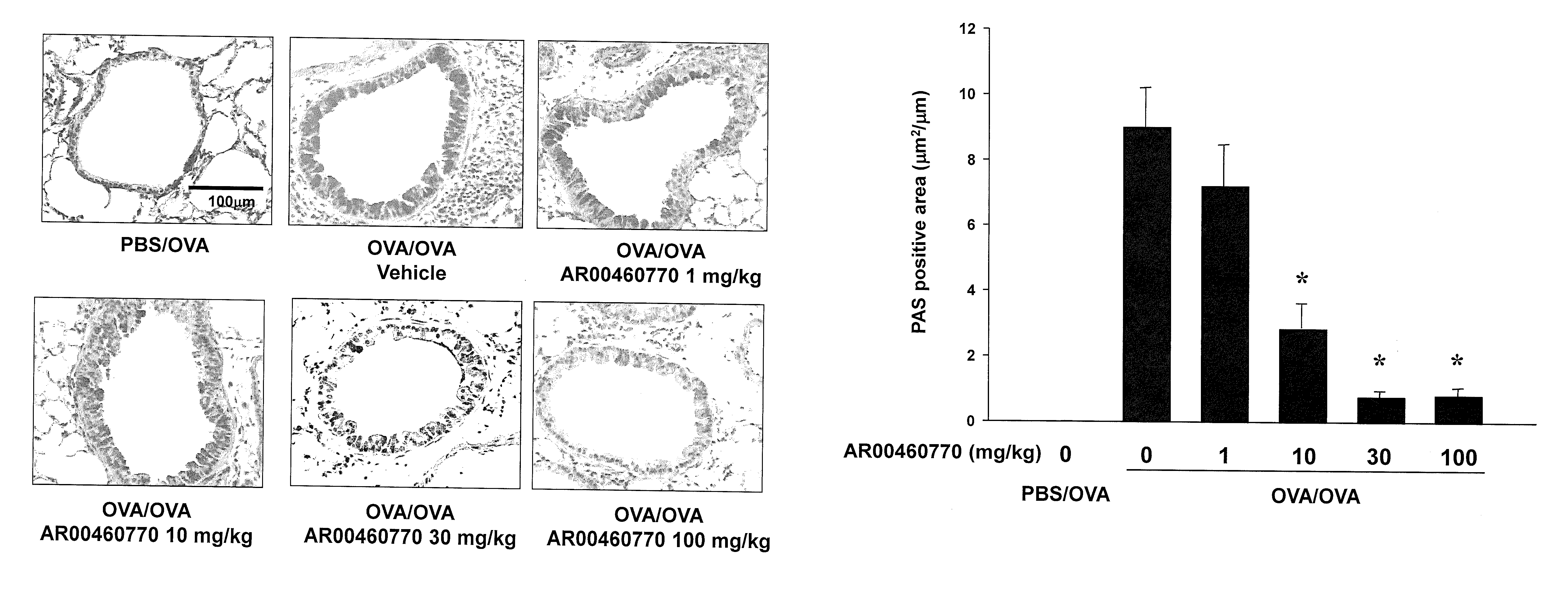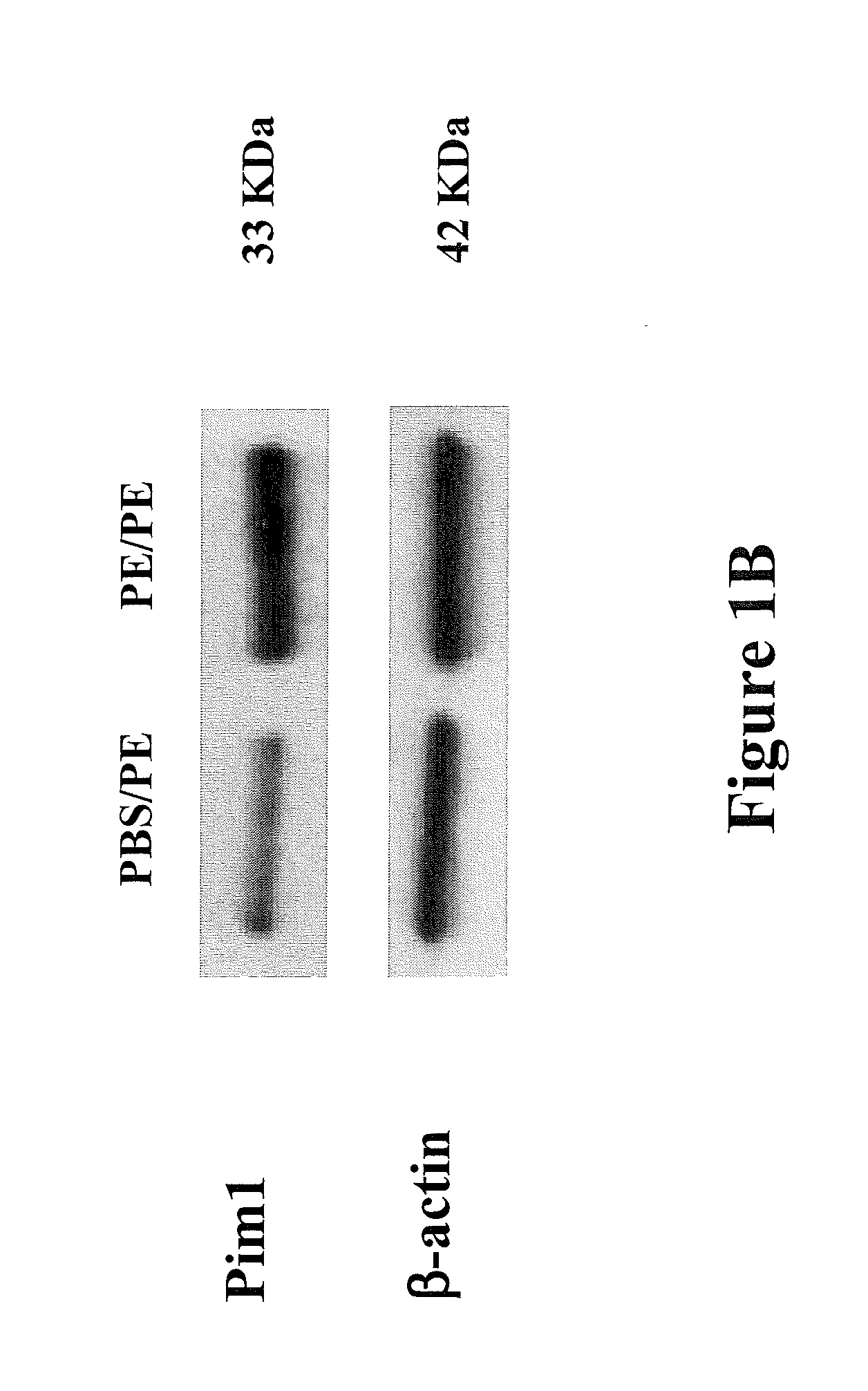Methods to treat allergic conditions
a technology for allergic conditions and treatment methods, applied in the field of new treatments for allergic diseases, can solve the problems of affecting the clinical treatment of allergic diseases, affecting the treatment effect of allergic diseases, etc., to achieve the effect of suppressing th17 differentiation, suppressing th2 differentiation, and reducing cd4+ and cd8+ proliferation
- Summary
- Abstract
- Description
- Claims
- Application Information
AI Technical Summary
Benefits of technology
Problems solved by technology
Method used
Image
Examples
example 1
[0074]This example shows that Pim1 kinase is upregulated in the small intestine of peanut sensitized and challenged mice.
[0075]Pim1 kinase protein expression was increased in the jejunum of PE sensitized and challenged mice (FIG. 1B). Pim1 kinase mRNA levels were 2-fold higher in the jejunum of PE sensitized and challenged mice (FIG. 1C); Pim2 and Pim3 mRNA levels were not altered following sensitization and challenge. Pim1 was expressed predominantly in the lamina propria of jejunal tissues of sensitized and challenged mice and the numbers of positive cells were increased by approximately 5-fold in PE sensitized and challenged mice (FIGS. 1D, 1E). The numbers of Pim3-positive cells were lower with little alteration following PE sensitization and challenge.
example 2
[0076]This example shows that Runx3 is downregulated in the small intestine of peanut sensitized and challenged mice.
[0077]Runx3 associates with Pim1 and catalytically active Pim1 kinase regulates the transcriptional activity of Runx3 (Aho, T. L., et al. 2006. BMC Cell Biol. 7:21-29). Runx3 and Runx / core binding factor β (Cbfβ) mRNA levels were decreased in the small intestine of PE sensitized and challenged mice. The levels of Runx3 and Cbfβ mRNA but not Runx1 were approximately 2-fold lower in the jejunum of PE sensitized and challenged mice compared to control mice (FIG. 2A). In parallel, Runx3 protein expression was also decreased in the jejunum of PE sensitized and challenged mice (FIG. 2B). Immunohistochemical analysis of jejunal tissues revealed that Runx3 protein was mainly expressed in the lamina propria and levels of expression were decreased by 3-fold in PE sensitized and challenged mice (FIG. 2C).
example 3
[0078]This example demonstrates inhibition of Pim1 kinase can attenuate PE-induced intestinal responses in vivo.
[0079]Based on the data showing increased levels of Pim1 mRNA and protein in the jejunum after peanut sensitization and challenge in wild-type (WT) mice, it was thought that Pim1 plays an essential role in the development of intestinal allergy. Whether inhibition of Pim1 kinase alters the severity of PE-induced intestinal allergy using the small molecule inhibitor, AR460770 was determined. Sensitized mice were given the inhibitor twice daily by mouth during the 7 days of PE challenge. AR460770 administration resulted in a dose-dependent inhibitory effect on peanut-induced intestinal allergy induction; 30-100 mg / kg AR460770 prevented development of diarrhea and symptoms in PE sensitized and challenged mice (FIGS. 3A, 3B).
[0080]As mast cells were shown to be involved in the response to PE sensitization and challenge (Wang, M., et al. 2010. J. Allergy Clin. Immunol. 126:306-3...
PUM
| Property | Measurement | Unit |
|---|---|---|
| pH | aaaaa | aaaaa |
| composition | aaaaa | aaaaa |
| plasma levels | aaaaa | aaaaa |
Abstract
Description
Claims
Application Information
 Login to View More
Login to View More - R&D
- Intellectual Property
- Life Sciences
- Materials
- Tech Scout
- Unparalleled Data Quality
- Higher Quality Content
- 60% Fewer Hallucinations
Browse by: Latest US Patents, China's latest patents, Technical Efficacy Thesaurus, Application Domain, Technology Topic, Popular Technical Reports.
© 2025 PatSnap. All rights reserved.Legal|Privacy policy|Modern Slavery Act Transparency Statement|Sitemap|About US| Contact US: help@patsnap.com



